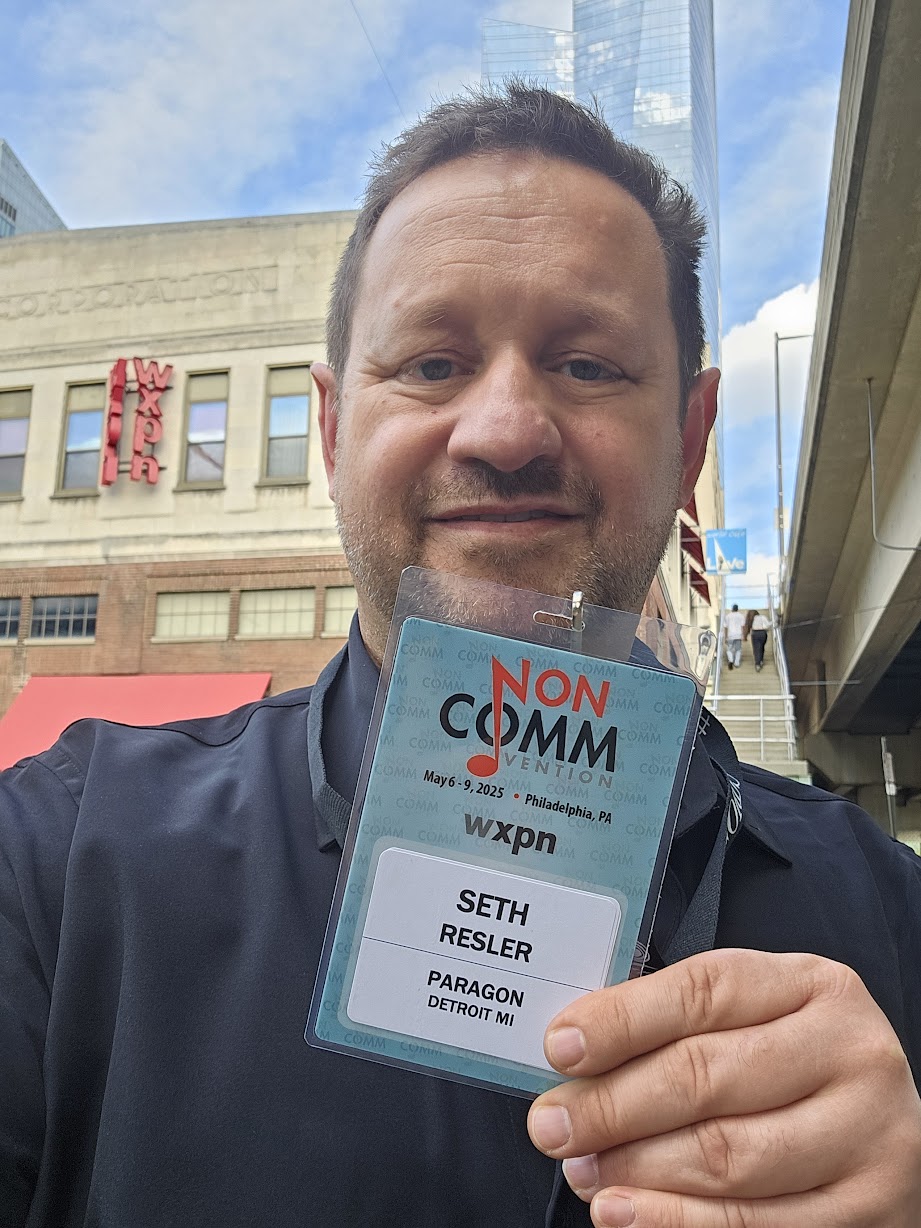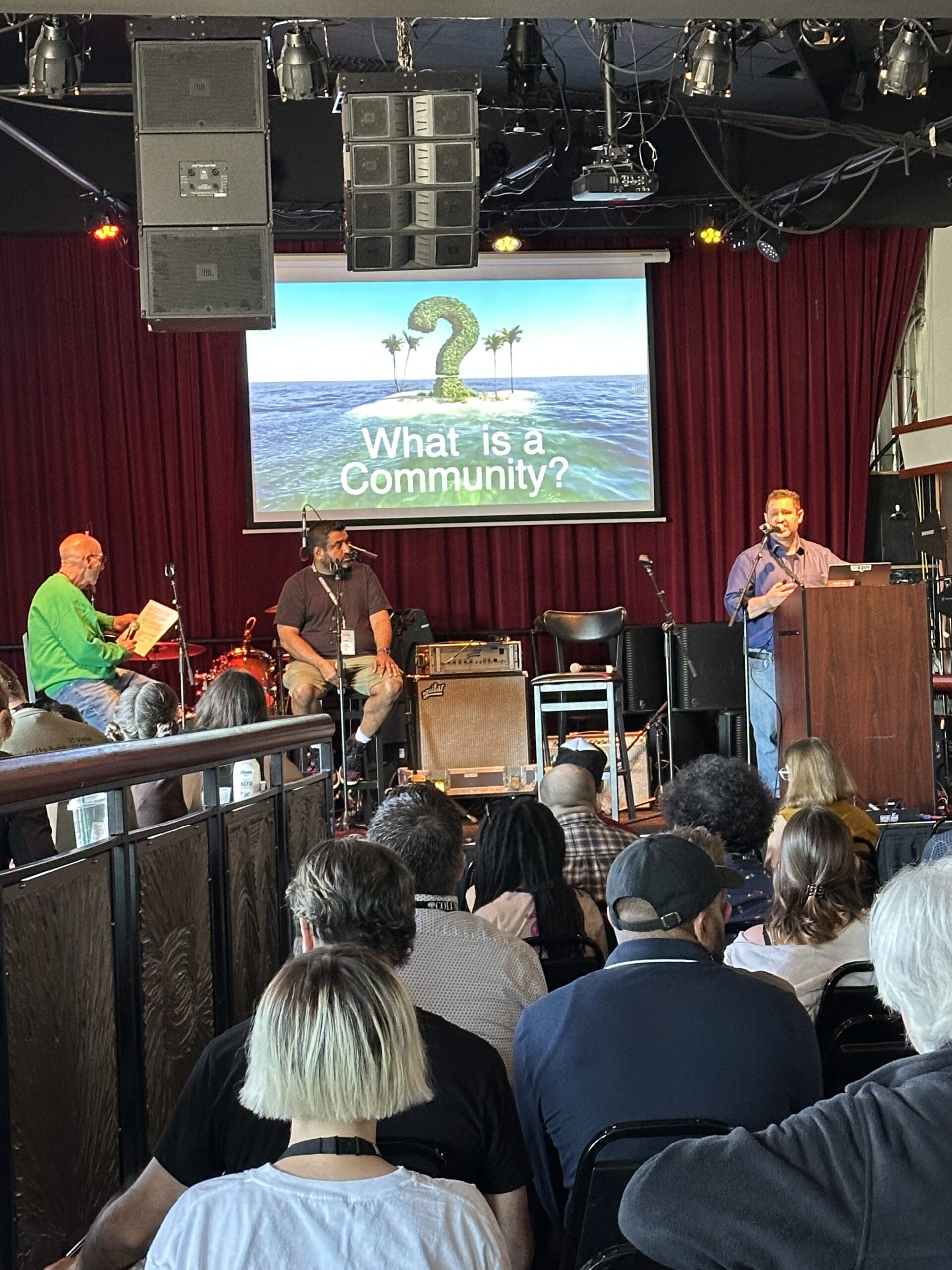This week, I had the chance to speak at the NON-COMMvention in Philadelphia, a conference for public radio music programmers, media professionals, and music industry folks.
Bruce Warren, Assistant GM at WXPN, invited me to join a panel called “Building and Engaging Community.” I shared the stage with Bruce and Jason Saldana, COO of PRX, at the legendary World Cafe Live.
Bonus: Later that day, The Black Keys were interviewed on the same stage. So technically, I opened for them. (I’ll be updating my resumé accordingly.)
Community: The Buzzword of the Conference
Community came up a lot at NON-COMMvention. That tracks with what we’re seeing in public media research—particularly the recent “Researching Unmet Needs” study by PMCC, the Station Resource Group, and Greater Public. It surveyed 30,000 Americans and found that the top need is this:
“There’s a powerful craving for community and live and local connection.”
People don’t just want content. They want to feel connected.
But What Is Community, Really?
The word “community” was everywhere during the conference, but I noticed something: Most people didn’t stop to define it.
That’s why Bruce asked me to speak. I’ve spent the last several years exploring this question—not by looking at radio, but by studying how other industries build community. I gave a short presentation and then joined Bruce and Jason for a panel discussion.
Here’s the main point I hoped broadcasters walked away with: A community is not the same thing as an audience.
Audience vs. Community: Know the Difference

L-R: Bruce Warren, Jason Saldana, Seth Resler
Broadcasters often use these two words interchangeably. They shouldn’t.
An audience consumes the same content, but usually doesn’t interact with each other. A community is made up of people who connect and share a mutual concern for one another.
If 1,000 people are driving to work listening to the same radio station, they’re not a community. They’re just individuals tuned in at the same time. That’s Isolated Synchronicity. You don’t get community until people interact and build relationships.
That doesn’t mean one is better than the other—it just means they serve different purposes. And they require different strategies.
How to Build an Audience
To build an audience, you create compelling content: Radio shows. Podcasts. Articles. Videos.
If your content is strong, it attracts an audience. That audience can then be monetized—through donations, sponsorships, subscriptions, etc.
How to Build a Community
To build a community, content alone won’t cut it. You need to create spaces—places where people can connect and form relationships. These can be digital, in-person, or hybrid spaces.
Yes, content can help attract people. (NON-COMMvention attendees were no doubt excited to see artists like Bob Mould and Arcade Fire perform.) But relationships usually form between the content—not during it.
Think about the connections that happened in the hallway between sessions. Over meals. At the afterparty. That’s where community is created.
Increasingly, conference organizers are realizing that if they pack the schedule too tightly, there’s no room for those interactions—and no community gets built.
What This Means for Public Radio
If public radio stations want to really build community—not just talk about it—they need to think beyond creating content. They need to think about creating spaces.
So How Do You Start?
I created a resource to help: The 5-Day “Create Your Community Roadmap” Challenge is a guided process designed for public media professionals. Just 45 minutes a day for five days, and you’ll have a strategic plan to start building a real community:
A Big Thank You
Huge thanks to Bruce Warren for inviting me to the NON-COMMvention. It was my first time attending, and it was fantastic—especially because I got to reconnect with old friends from my days as a program director. Some of them I hadn’t seen in decades. That’s what made this event so special for me.
And honestly, that’s what community is all about.

Leave A Comment